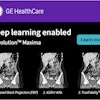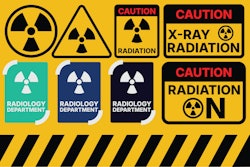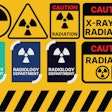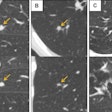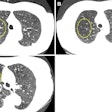Communicating CT's risks and benefits effectively to patients is an important aspect of advocating for responsible imaging use for radiologists, according to a new report in European Radiology.
In the piece, published on 9 August and endorsed by the Executive Council of the ESR in July, a team of authors led by Prof. John Damilakis, head of the Department of Medical Physics in the University of Crete’s School of Medicine, addressed the responsibility of radiologists to recommend appropriate imaging use through careful justification and optimized protocols.
"Transparency about medical radiation exposure is important; patients have a right to know that a CT scan, while providing important diagnostic information, also carries a very small potential to contribute to cancer risk in the future," they noted. "These risks must be put into proper perspective to avoid undue fear."
The absolute risk to any single patient from one CT scan is very small. "By contrast, the immediate medical risk of not scanning a child with serious symptoms (and thereby missing a critical diagnosis) could be far higher. It is crucial that patients understand that CT scans are generally safe, and very often lifesaving, when used appropriately."
Damilakis and colleagues urged radiologists to address concerns with patients so that while imaging risks are communicated, they are not overstated or open to misinterpretation. They added that while large-scale cohort study findings show increased cancer incidence following CT exposure -- e.g., retrospective studies showing higher rates of leukemia and brain tumors later in life in children who have undergone CT studies -- the findings may reflect bias due to other risk factors (e.g., symptoms necessitating CT scans) and “the challenge of detecting a small signal (radiation-induced cancers) against the higher ‘noise’ of background cancer incidence.”
The risk must be framed in the context of absolute risk of the procedure (very low to any single patient) versus the risk of not performing the study and missing a critical diagnosis, they continued. It’s incumbent on the radiologist to explain the risk of CT-associated malignancies in an understandable way that does not cause unnecessary alarm in patients, and also considers the differences between individual and population-level risk factors.
Furthermore, the authors wrote that new technology designed to substantially lower CT scan dose while maintaining diagnostic quality can assist radiology departments in their responsibility for keeping protocols up to date, as well as adhering to the ALARA principle (As Low As Reasonably Achievable). In using modern tools such as automated exposure control, iterative image reconstruction, and tailored protocols, radiologists can mitigate risks to patients.
They suggested that explaining the protocols and safety precautions (such as the use of ALARA) can be part of a radiologist’s strategy in discussions with patients, better equipping them to make informed decisions: “In essence, the message should be: ‘We will only do this CT if it’s needed, and if we do it, we will use the lowest possible dose because we are aware of even the very small risks involved.’ This kind of nuanced dialogue can prevent misinterpretation and maintain trust.”
Read the article on the European Radiology site.


